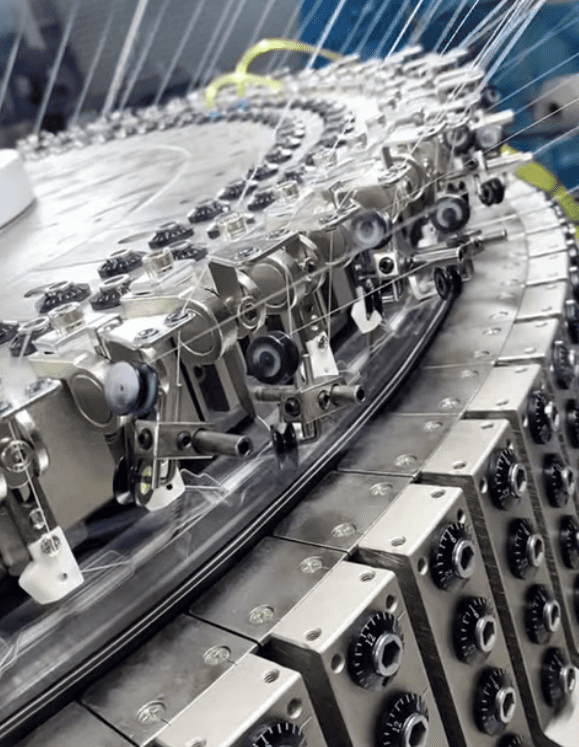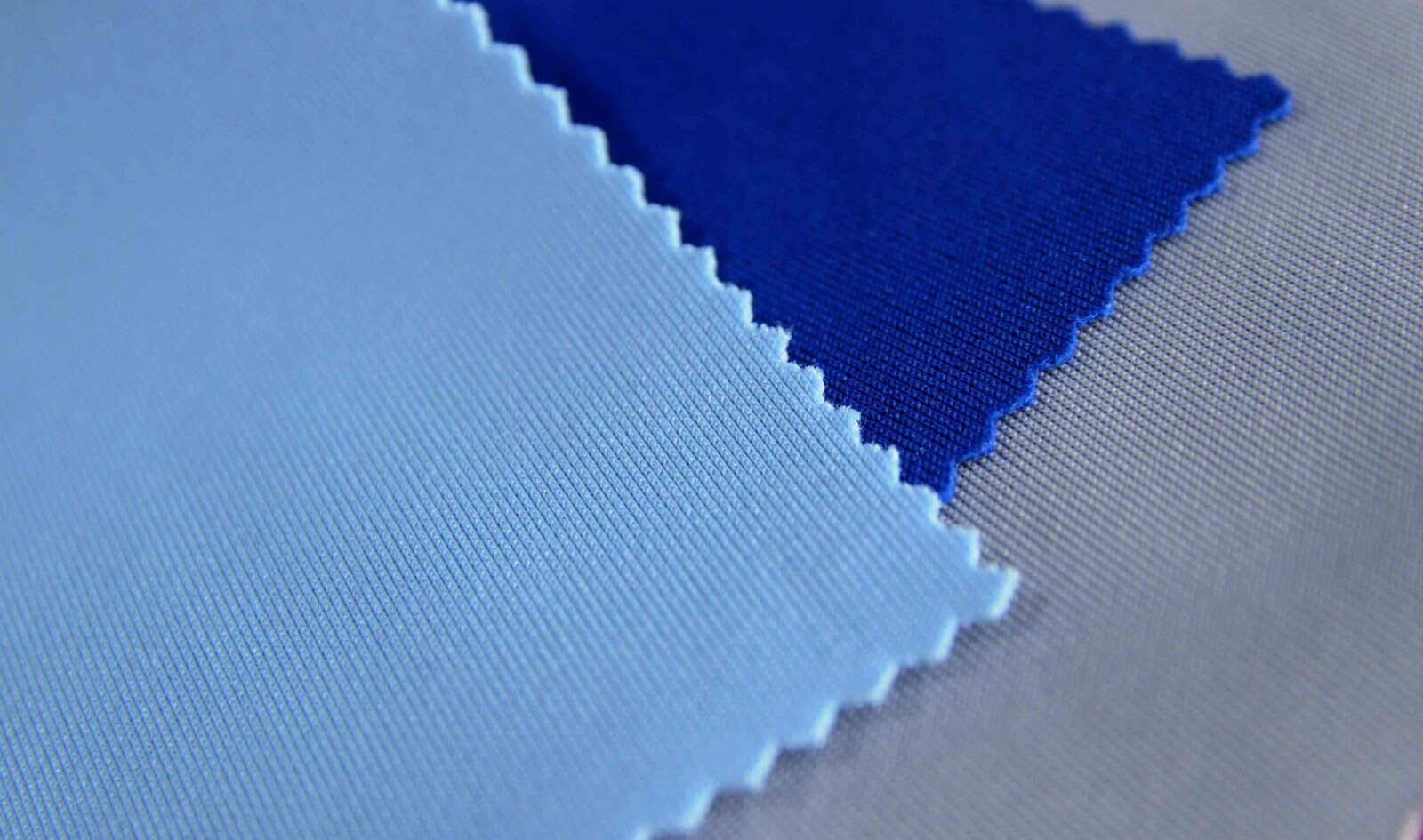Scuba Fabric Circular Knitting Machine: A Revolution in Double-Knit Textile Manufacturing
May 12, 2025
In recent years, scuba fabric has emerged as a standout material in the textile industry, widely recognized for its durability, thickness, and adaptability across a range of applications. Used prominently in fashionwear, sportswear, and even home décor, this double-knit fabric offers unique structural and aesthetic qualities that differentiate it from traditional single-knit fabrics.
At the heart of scuba fabric production lies the circular knitting machine, a specialized tool engineered to produce high-density double-knit materials with precision and consistency. In this article, we explore the definition and structure of scuba fabric, examine its manufacturing process, and delve into the role of circular knitting machines in bringing this versatile textile to life.

Scuba fabric is often mistaken for neoprene, yet there are subtle distinctions between the two. Technically, scuba is a type of double-knit polyester-spandex fabric, designed to mimic the appearance and feel of neoprene—a synthetic rubber material. The name "scuba" is inspired by its visual resemblance to the thick, padded material used in diving suits, although it lacks the rubber core that defines true neoprene.
Made from a blend of polyester and spandex, scuba fabric is known for being smooth, elastic, wrinkle-resistant, and moderately thick. These properties make it ideal for creating garments that hold their shape well, such as bodycon dresses, structured skirts, sportswear, and jackets.
A hallmark of scuba fabric is its double-knit construction. Unlike single-knit fabrics, which use a single set of needles, double-knit fabrics like scuba are produced using two sets of needles, creating a denser, more stable material. This makes the fabric heavier, stretch-resistant, and durable, capable of maintaining form over time.

Scuba fabric offers a unique combination of qualities that make it suitable for both functional and fashion applications:
Elasticity: Due to the inclusion of spandex, scuba fabric offers excellent stretch and recovery, allowing for movement without permanent deformation.
Thickness and Structure: The double-knit technique gives scuba a padded feel, adding structure to garments.
Smooth Surface: Both sides of the fabric have a clean, smooth finish, making it ideal for a wide range of finishes and treatments.
Wrinkle Resistance: Scuba holds its shape and resists wrinkling, making it low-maintenance and travel-friendly.
Moisture Resistance: Though not waterproof, scuba fabric is less absorbent than traditional knits, making it suitable for lightweight activewear or outerwear.
Scuba fabric is remarkably versatile. Here are some of its most common applications:
Apparel: Dresses, skirts, pants, jackets, and fitted tops.
Sportswear: Yoga pants, gym leggings, and fitted sports tops.
Fashionwear: Structured or voluminous garments requiring a firm silhouette.
Home Decor: Cushion covers, light upholstery, and decorative items.
Costume Design: Thanks to its thickness and flexibility, scuba is often used in theatrical or cosplay costumes.
The production of scuba fabric relies heavily on circular knitting machines, which are industrial knitting devices designed to produce fabric in a continuous tubular form. These machines are equipped with cylindrical needle beds that rotate during the knitting process, allowing for high-speed and high-volume textile manufacturing.
Circular knitting machines used for scuba fabric are specifically engineered to support double knitting, utilizing two sets of needles—front and back—to interlock loops from two yarn feeds. The result is a dense, stretchable, and reversible fabric that’s ideal for garments needing both flexibility and form.
Let’s take a closer look at how scuba fabric is manufactured—from chemical synthesis to textile knitting—highlighting each critical phase of the process:
The foundation of traditional neoprene—and by extension, scuba-like materials—begins with chloroprene, a synthetic monomer. Chloroprene is produced through chemical reactions involving butadiene, a petroleum-based hydrocarbon, or derived from limestone through acetylene chemistry. Though scuba fabric in its modern textile form often uses polyester-spandex blends, the term sometimes overlaps with materials involving chloroprene, especially in industrial applications.
In industrial settings, chloroprene is subjected to a polymerization process known as free radical emulsion polymerization. During this process, the chloroprene monomers bond together, forming polychloroprene, a synthetic rubber polymer. In the case of pure scuba textiles, however, manufacturers primarily use synthetic yarns such as polyester combined with spandex (elastane) to create the fabric’s characteristic stretch and durability.
Once the base polymer is created or the synthetic fibers are produced, they are processed into yarns. These yarns, typically a blend of polyester and spandex, are delivered to textile manufacturing plants, where they are pre-treated and prepared for knitting. Additives may be introduced to enhance color fastness, stretch retention, or moisture-wicking capabilities.
In the textile factory, the prepared yarns are loaded into a circular knitting machine, specifically a double jersey circular knitting machine. These machines knit the yarns into a continuous tubular fabric using two sets of needles positioned in opposing directions.
The knitting process involves:
Needle Selection: The machine selects needles based on the desired pattern and structure.
Yarn Feeding: Polyester and spandex yarns are simultaneously fed into the knitting zones.
Loop Formation: Interlocking loops are created using the two needle beds to build a dense, stretchy fabric.
Advanced circular knitting machines feature automated tension control, digital programming, and precision timing, allowing for the consistent production of scuba fabric at high speeds.
After knitting, the scuba fabric undergoes dyeing using synthetic-compatible dyes, such as disperse dyes for polyester. Post-dyeing, the fabric is treated with softeners, anti-static agents, and sometimes moisture-wicking finishes.
The finishing process may also involve:
Heat-setting to stabilize the fabric structure.
Brushing or calendaring to modify surface texture.
Moisture control to maintain dimensional stability.
Before the fabric is sent to garment manufacturers, it undergoes rigorous quality checks. This includes testing for:
Dimensional stability
Colorfastness
Elastic recovery
Surface defects
Once approved, the fabric is rolled and packaged for shipment to apparel factories, where it is cut and sewn into final products.
Circular knitting machines offer a number of benefits in the production of scuba fabric:
High Production Efficiency: Capable of operating at thousands of revolutions per minute, these machines can produce vast quantities of fabric in less time.
Precision and Uniformity: Advanced models offer precise control over loop formation and fabric weight, ensuring consistent quality.
Flexibility in Fabric Design: Different settings and needle gauges allow for varying textures and patterns.
Cost-Effective Operation: Automated features reduce labor costs and material waste.
Scalability: Suitable for both small-batch and mass-scale fabric production.
The production of scuba fabric is expected to benefit from ongoing advancements in knitting machine technology, eco-friendly materials, and smart textiles.
Some key trends include:
Sustainable Fibers: Efforts to replace polyester with recycled PET or bio-based yarns to reduce environmental impact.
Smart Scuba Fabrics: Integration of conductive yarns to create wearable electronics.
3D Knitting: Innovations allowing garments to be knit in three dimensions, reducing the need for seams.
AI-Driven Machines: Use of artificial intelligence for predictive maintenance, real-time quality control, and automatic defect correction.
Scuba fabric, with its unique combination of thickness, elasticity, and structure, continues to carve a niche in both fashion and functional apparel markets. At the core of its production lies the circular knitting machine, a marvel of textile engineering that enables high-speed, high-quality double-knit fabric manufacturing.
As technology advances and consumer demand evolves, the integration of smart systems and sustainable materials will likely propel scuba fabric production into an even more innovative future. Whether in a designer dress, athletic wear, or upholstery, scuba fabric is here to stay—and circular knitting machines will remain essential in shaping its story.
Previous: Ensuring Loop Stability in Double-Sided Circular Knitting Machines
We have been committed to manufacturing all types of circular knitting machines with great quality and reasonable price for a long time. Our professional team is highly specialized and problem-solving oriented. We put the most effort into meeting your knitting demands, achieving a win-win situation.